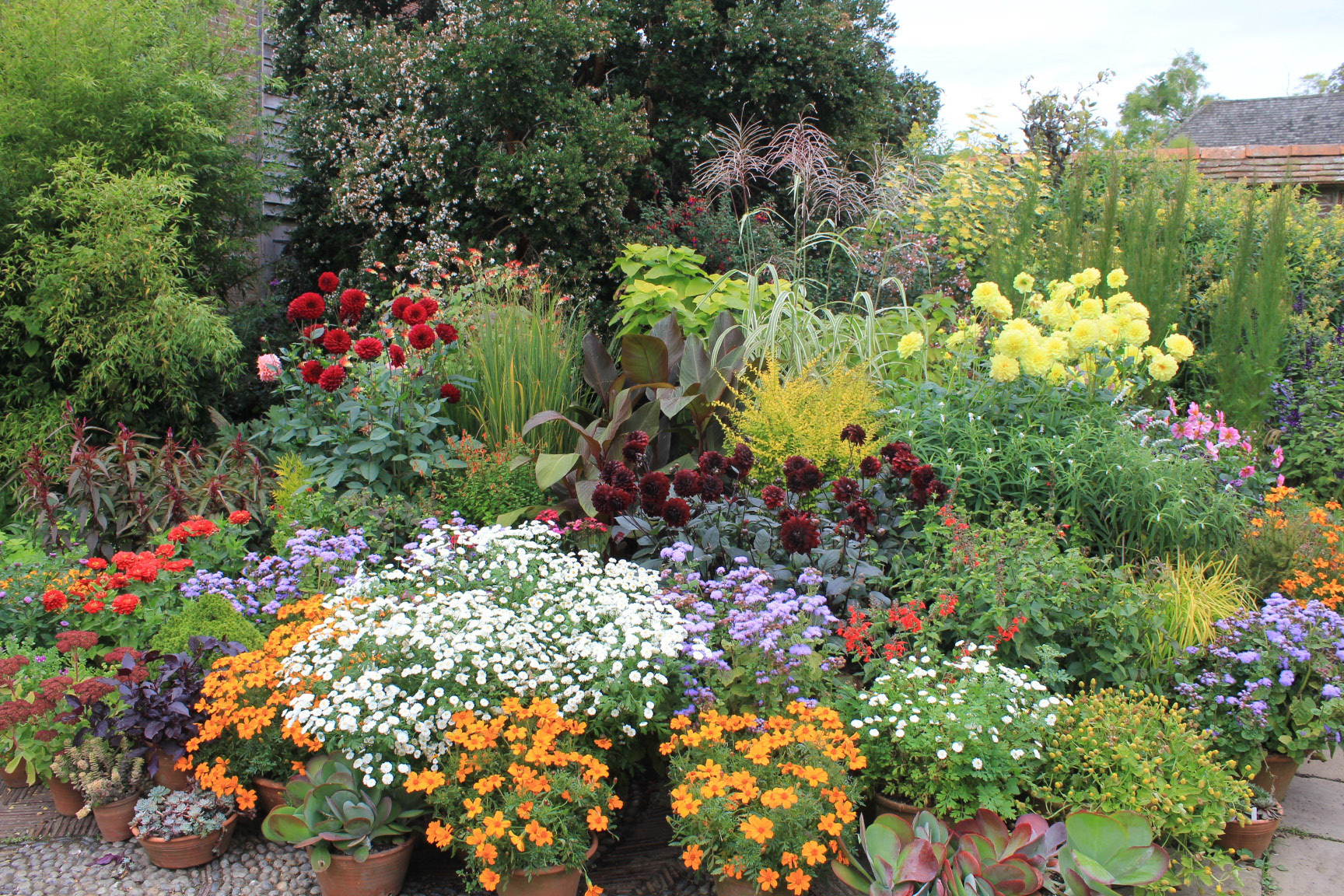Late summer and the gardening should be easy. There are still plenty of flowers around, joined now by grasses, seedheads and fruits. It could all be peachy out there, but equally it could all be over, or at best, be looking a little careworn and scrappy. I’m always full of enthusiasm back in the spring and the garden centres are stocked with plants that are about to flower. It can be hard to find late flowering plants – and the end of the summer is a distant thought. Many gardens are, or just end up being at their flowery best in June when all the cottage garden lovelies are in full swing – and then they seem to pack up and the garden reverts to green (perhaps speckled with some ubiquitous orange Crocosmia) – just when we are spending lots of time outside. Our autumns are getting longer and warmer too, so we could be enjoying the garden for months yet. If you’d like to be surrounded by colour until Christmas, there are masses of good plants to choose from for a late display – and ways of prolonging the show into autumn and beyond.
Daisy daisy
Daisies are a big group of plants in the Asteraceae family and each flower is actually a collection of tiny flowers, which is why they are so popular with butterflies and bees; lots of nectar can be accessed from one place, saving flying time. The flower heads make convenient landing platforms too, with their wide centres and sturdy stems. The daisies that bloom in late summer and autumn are the Rudbeckias, Echinaceas, Asters and Heleniums. The range of colours are suitably sultry, verging on autumnal – shades of dusky pink, mellow oranges, russet and mahogany, with splashes of blue from the asters. Many have long lasting seed-heads too, so once the flowers have finished they persist as silhouettes.
Gorgeous grasses
Ornamental grasses come into their own in late summer, sending up feathery plumes or shimmery seed heads. They bring movement and an airy lightness that will lift a planting scheme. Use shorter varieties at the front of the border – try the irresistibly tactile Stipa tenuissima or showy Pennisetums with delicate bottlebrush flowers. For a see-through curtain in the middle of a border use Molinia ‘Transparent’, or Panicum virgatum. Calamagrostis ‘Carl Foerster’ flowers earlier in the summer, but looks great in autumn and winter, standing tall and golden through the worst of the weather. I often use larger grasses, such as Miscanthus sinensis as shrub substitutes (and that’s easier typed than said), to provide a contrast to the blocky ‘pudding’ shapes that evergreen shrubs often have. There is a grass for every situation – they can be shade tolerant or sun loving, dry or damp soil. They have become welcome friends in the garden, performing nearly all year, but at their graceful best in the early autumn.
Late season border boosters
We’ve talked about daisies, but we needn’t live by those alone, as there are lots of other flowering perennials that will help to provide a summer colour finale. Many of them complement the grasses really well too and often have either a good overall shape or structure, seed heads or other attribute that helps them to ‘die gracefully’ and retain an attractive presence. Sedums are particularly good value, with glaucous, fleshy leaves, long lasting flowers that are just as attractive in bud and then as seed-heads. Sedum flowers are also bee and butterfly magnets, providing an important late source of nectar.
Ceratostigma willmottianum is a striking middle of the border plant. It has blazing autumnal foliage and azure blue flowers. It is slightly shrubby, dying back in a hard winter, but keeping its shape and size in milder conditions. Another blue flowering ‘shrublet’ is Perovskia ‘Blue Spire’ or Russian sage. Reminiscent of Lavender and Rosemary, Perovskia should be grown in similar sunny, free-draining situations.
There are several clump-forming perennials that will make a dynamic sweep of late colour when planted among grasses: Eupatorium maculatum (John Pye-weed) is a tall, rangy plant beloved of butterflies, Persicaria is low growing, but both will romp about, forming large thickets if left to their own devices. Almost daisy-like, but more suited to a shadier part of the garden, is the airy looking Japanese anemone or windflower, Anemone × hybrida ‘Honorine Jobert’. This is a tall plant with white flowers on wiry stems that has a stoloniferous, spreading habit.
Better behaved, but just as generous with their flowers are Penstemons, Salvias, Phlox and Monardas, all available in a range of colours and all good late summer border stalwarts, especially if given the ‘Chelsea Chop’ (cutting the whole plant back by a third at the end of May). This is done to stop them getting too leggy and flopping over just as the flowers appear. Dahlias and Chrysanthemums are firmly back in favour too, clashing their way through the borders with retro charm, like seventies disco divas. Remember that most are not completely hardy, so will need protection through the winter.
Late flowering shrubs
Hydrangeas are hugely fashionable again and there are lots of impressive new varieties around. The flowers (actually they’re not flowers, but bracts) persist for a long time, fading to rust, lime green or deep red, depending on the cultivar. Abelia grandiflora is an easy-going semi-evergreen (loses leaves in a harsh winter), which has both flowers – in pale pink – and long-lasting bracts, in a contrasting autumnal shade of rusty red. Lower growing and tidy-natured is a demure little deciduous shrub, Caryopteris, which has grey-green foliage and pale cerulean blue flowers. It prefers a sunny position, but will put up with semi-shade, making it a useful, quiet member of the late border team.
The garden in late summer has a lot to offer, but the days are noticeably shortening: mornings and evenings are cool and the rate of growth has slowed. There aren’t too many pressing tasks – apart from perhaps dead-heading and watering, trimming a hedge or cutting the grass if you’re feeling energetic. Much better though – and while there’s still time and sunshine – is to sit back and watch the bees and butterflies flitting among the late summer flowers. Long may they last.
Keeping the show on the road
- Deadhead regularly to stop flowers going to seed and the plants thinking that their job is done. This is especially important with annuals like Cosmos and Nicotiana, as they only live for one season.
- Feed container plants as the food in the compost only lasts for 6 weeks. Fertiliser high in Potash will keep the flowers coming.
- Try to choose plants that have a good overall shape, interesting foliage, berries or stems to continue the interest into winter, even just those that ‘die’ gracefully will bring something extra to the party.
- Help the soil retain moisture and prevent weeds growing by applying a mulch in the spring.
- Choose plants that flower for a long period – Geranium ‘Rozanne’, Verbena bonariensis and Gaura ‘Whirling Butterflies’ flower continuously from June until the frosts.
- Check flowering times when buying plants and make sure there are plenty of late bloomers in your basket…
TEST
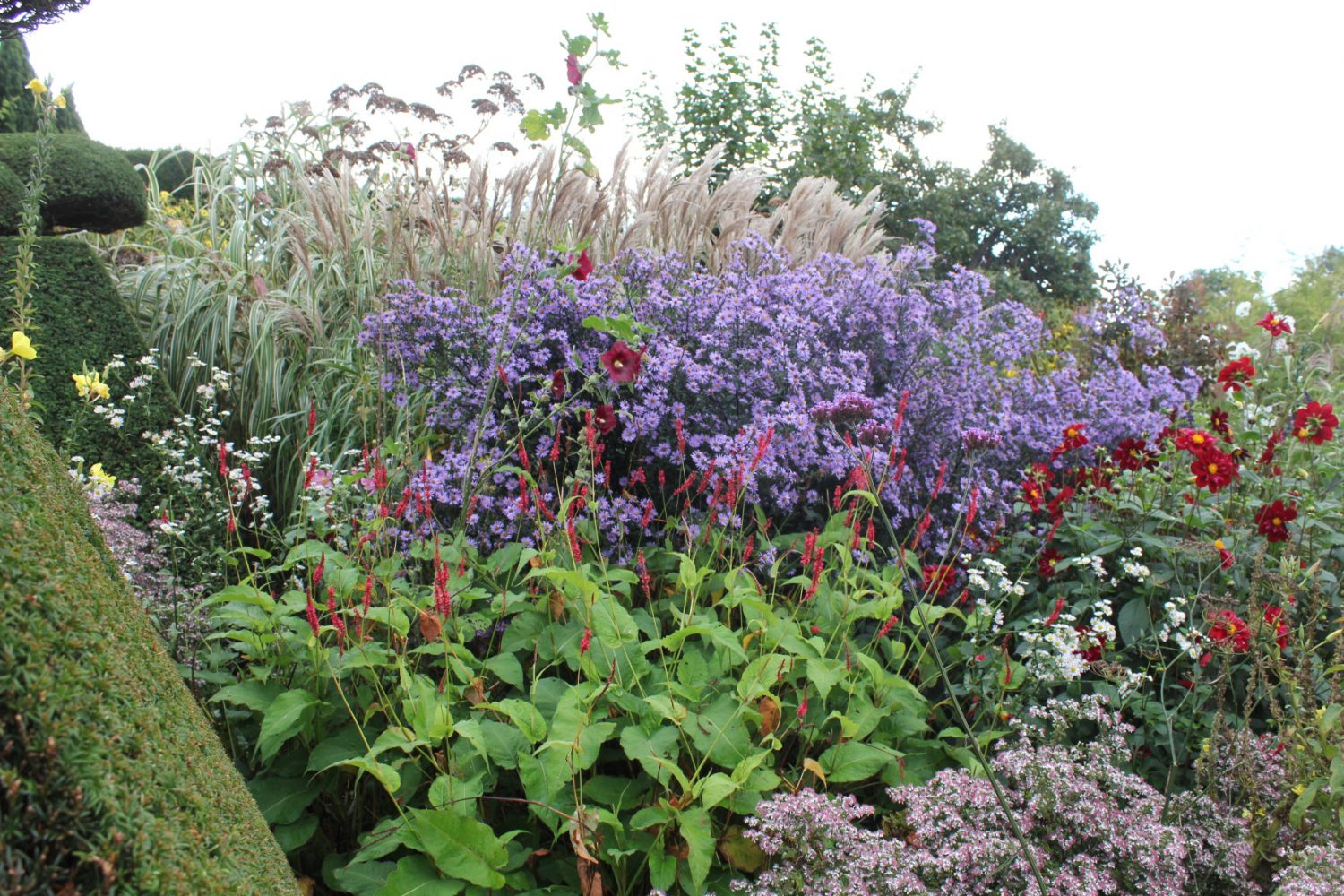 TEST
TEST
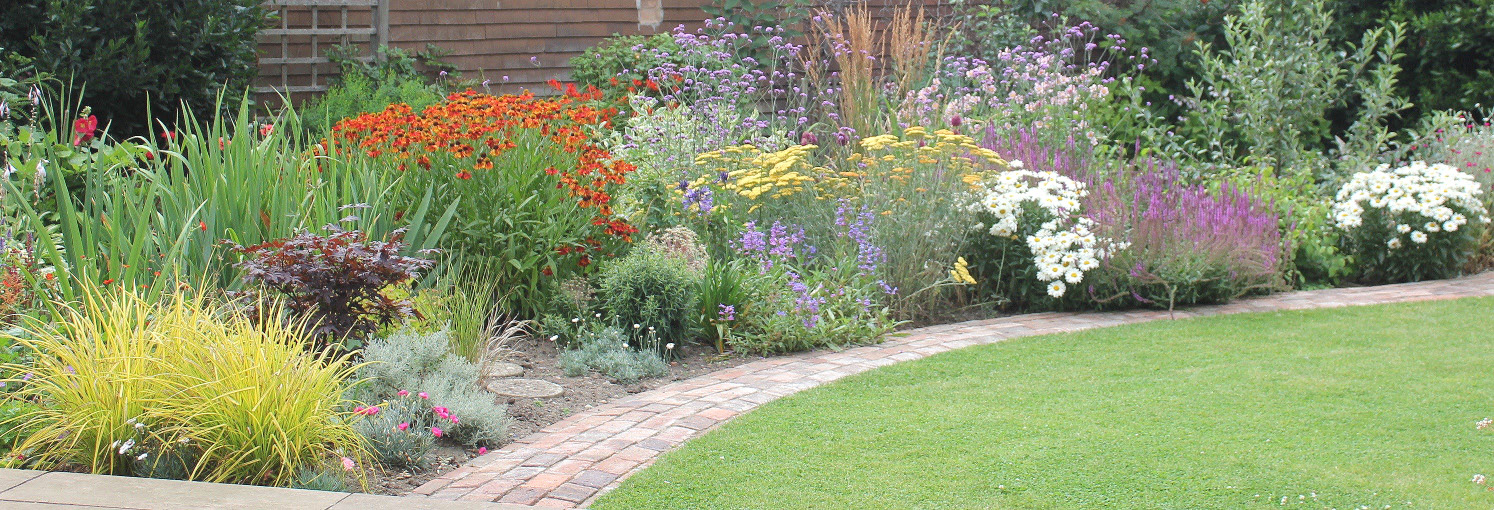 TEST
TEST
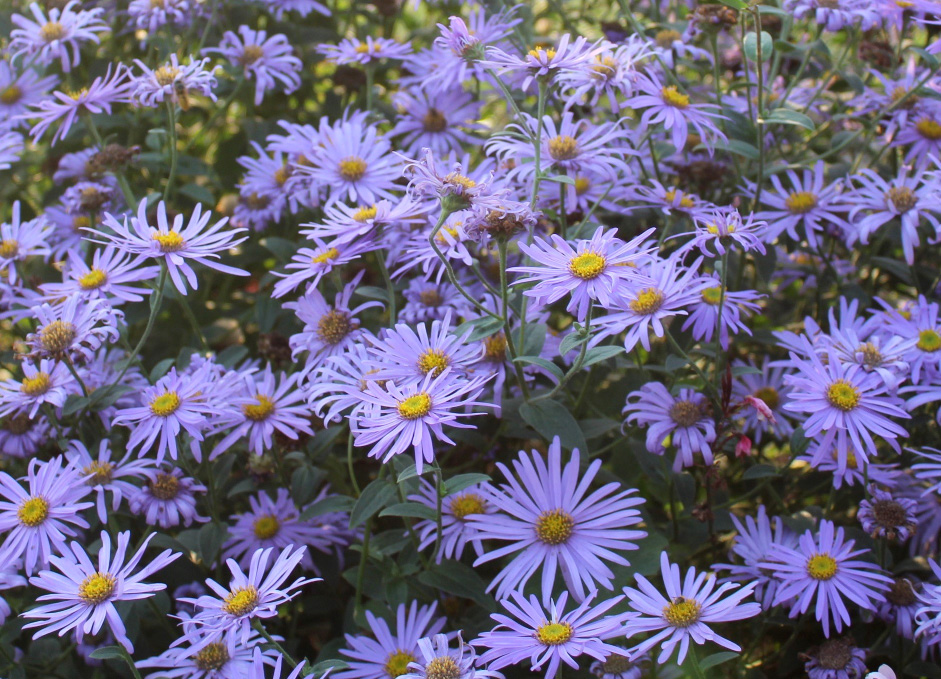 TEST
TEST
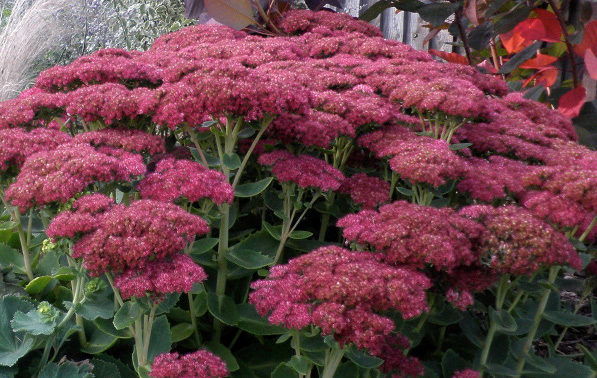 TEST
TEST
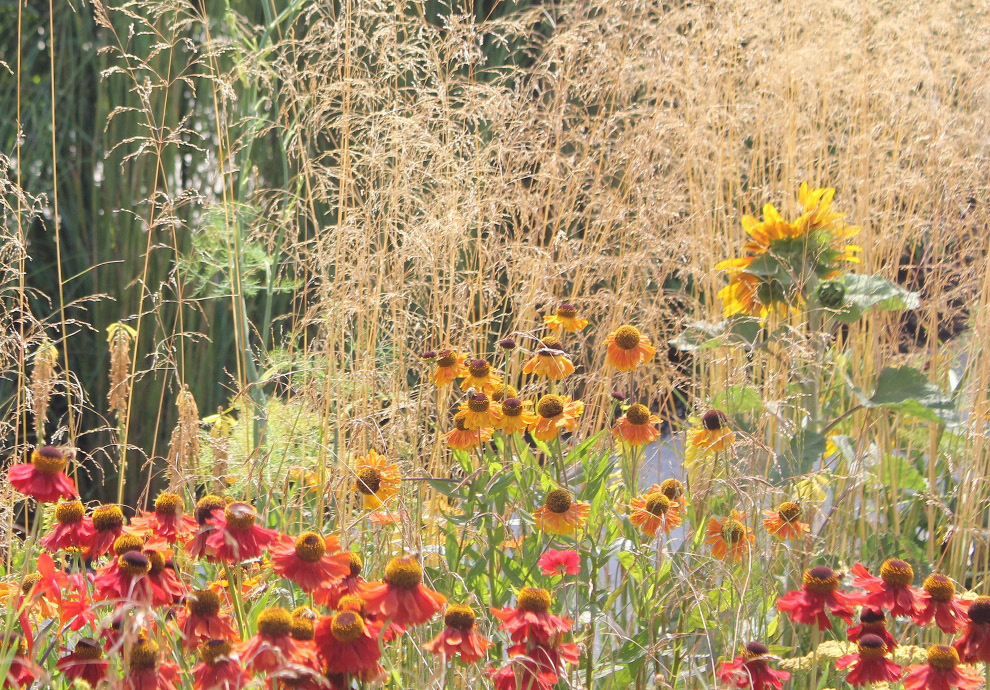 TEST
TEST
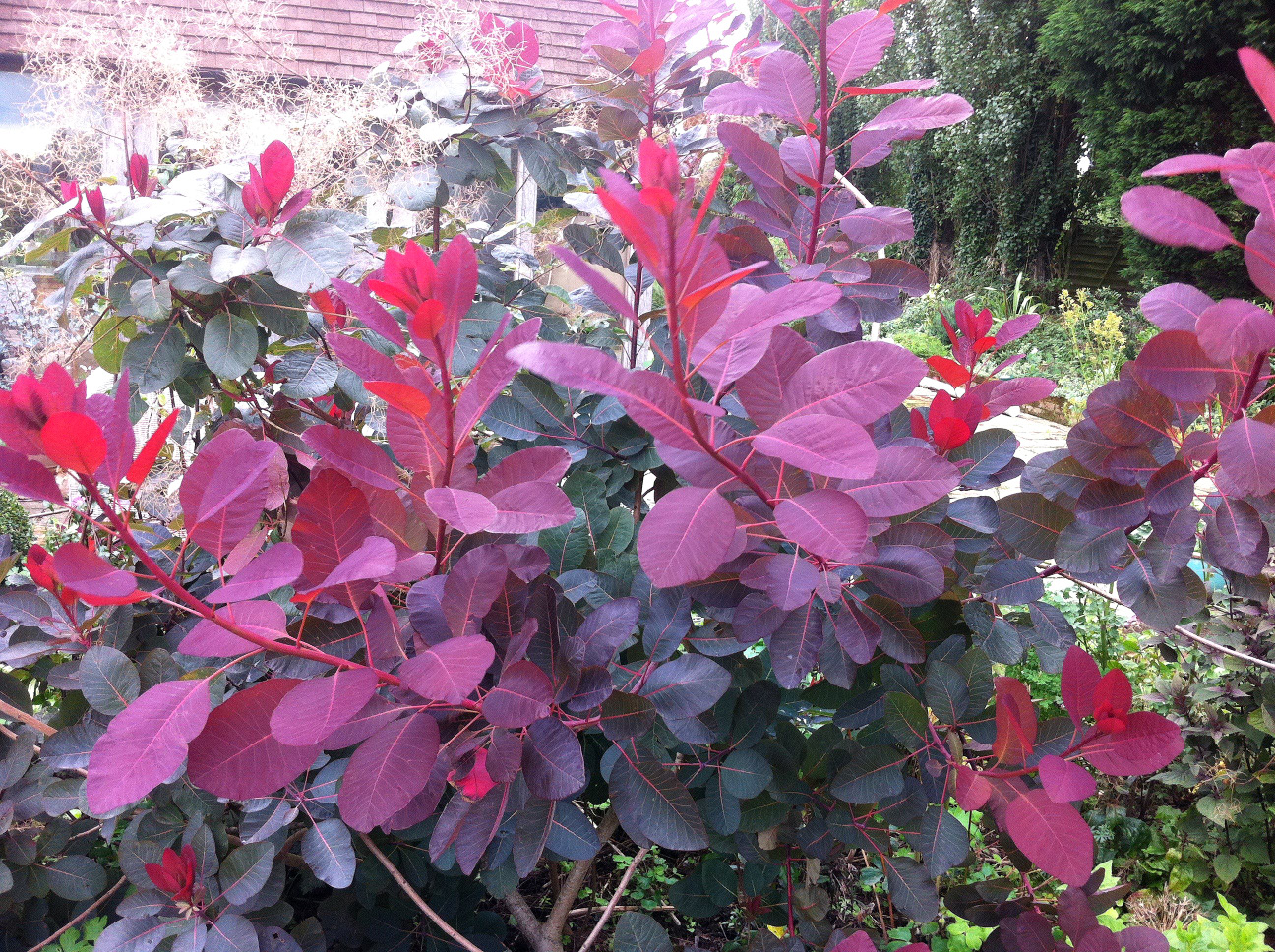
You may also like
Sue Whigham shares some valuable new-to-gardening advice I’m sure that by now we should be used to the rain but I’m not entirely sure that we are. We had a dry, sunny day the other day and how everybody’s mood...
Jane Howard gets to the bottom of why so many ponds have disappeared across the High Weald I have a new passion, almost an obsession, it’s about ponds. And there’s a distinct possibility I might become a bit of a...
Sue Whigham takes a meander along nature’s verdant and vital corridors Recently the BBC’s Today programme carried a feature about England’s hedgerows which created a lot of interest among listeners. On the strength of that, Martha Kearney interviewed one of...
